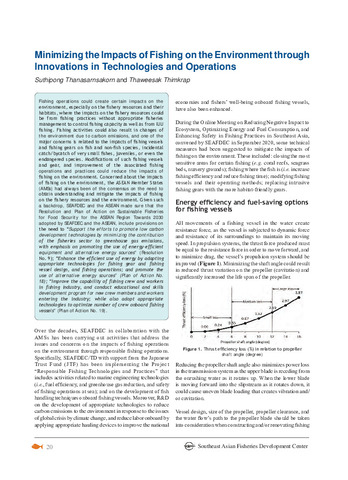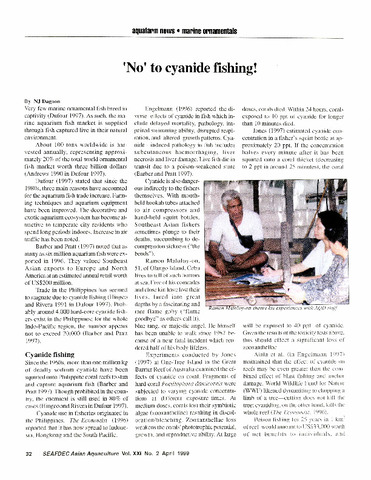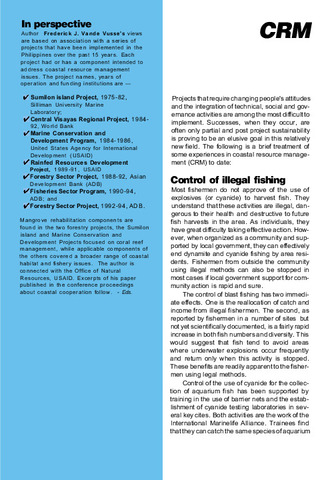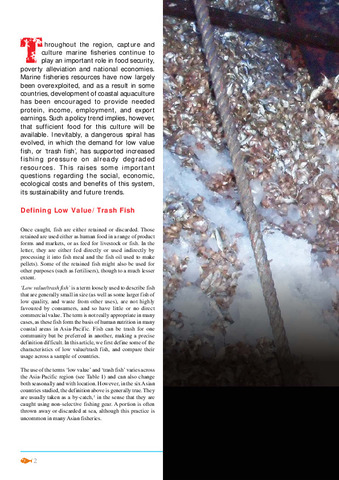| dc.description.abstract | Fishing operations could create certain impacts on the environment, especially on the fishery resources and their habitats, where the impacts on the fishery resources could be from fishing practices without appropriate fisheries management to control fishing capacity as well as from IUU fishing. Fishing activities could also result in changes of the environment due to carbon emissions, and one of the major concerns is related to the impacts of fishing vessels and fishing gears on fish and non-fish species, incidental catch/bycatch of very small fishes, juveniles, or even the endangered species. Modifications of such fishing vessels and gear, and improvement of the associated fishing operations and practices could reduce the impacts of fishing on the environment. Concerned about the impacts of fishing on the environment, the ASEAN Member States (AMSs) had always been of the consensus on the need to obtain understanding and mitigate the impacts of fishing on the fishery resources and the environment. Given such a backdrop, SEAFDEC and the ASEAN made sure that the Resolution and Plan of Action on Sustainable Fisheries for Food Security for the ASEAN Region Towards 2030 adopted by SEAFDEC and the ASEAN, include provisions on the need to “Support the efforts to promote low carbon development technologies by minimizing the contribution of the fisheries sector to greenhouse gas emissions, with emphasis on promoting the use of energy-efficient equipment and alternative energy sources” (Resolution No. 9); “Enhance the efficient use of energy by adapting appropriate technologies for fishing gear and fishing vessel design, and fishing operations; and promote the use of alternative energy sources” (Plan of Action No. 18); “Improve the capability of fishing crew and workers in fishing industry, and conduct educational and skills development program for new crew members and workers entering the industry; while also adopt appropriate technologies to optimize number of crew onboard fishing vessels” (Plan of Action No. 19). | en |




